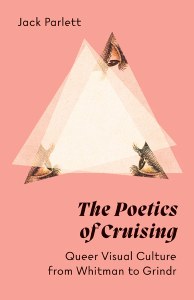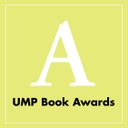The Arts Fuse: “The Poetics of Cruising” — Imaginative Acts of Capture
Much has been made about the sexual politics of men looking at women, but what about men erotically looking at other men? This question brings up the topic of gay cruising, or soliciting casual (and often anonymous) sex through the exchange of glances between men in public spaces. It is a form of quiet communication that expresses sexual availability and interests, a language that poet and University of Oxford research fellow Jack Parlett describes as an eroticized “series of intensified looks, looks which may come and go but nonetheless leave an impression.” His new book The Poetics of Cruising: Queer Visual Art from Whitman to Grindr argues that cruising has “long been a visual culture where image and self-image play a constitutive role” — “an aesthetic phenomenon” articulating the “optical interaction between queer subjects in time and space” in profoundly visual terms. By exploring the historical and artistic significance of cruising throughout poetry, photography, and visual culture, Parlett produces a rich and exciting topography of queer culture that posits a reflexive relationship of vicarious cruising between “cruising texts” and their consumers.




